North Sentinel Island
Thursday, 25th June 2009 by RobK
We've tagged this sight as "India", but in truth North Sentinel Island is hardly even a part of the world as we know it.
Although it is barely 40km away from the well populated South Andaman Island, North Sentinel is home to what is probably the last "uncontacted" tribe on Earth. The islanders are fiercely independent and have shunned all attempts to contact them, although in 1991 a few intrepid tribesmen did go as far as accepting gifts of coconuts from Indian government officials who approached the island in a dinghy. They survive as hunter-gatherers, armed with bows and arrows tipped with metal scavenged from whatever flotsam and jetsam washes up on shore.
Nobody knows how many people live on the island - the official 2001 census figure, recorded from aerial surveys, was 39, but some estimates are as high as 400. What we do know is that the tsunami of December 2004 had a devastating impact on much of the Andaman region, and North Sentinel was no exception. For a dramatic illustration of its effects, compare these two images:
The first picture, taken from Google Earth, was captured before the tsunami (the exact date isn't recorded but it was circa 2000). The second image was taken in April 2005 by the European Space Agency's Proba satellite, and shows that the island's fringing reefs have been lifted considerably, exposing large areas of coral and destroying much of the shallow lagoon.
The Indian government, worried that the North Sentinelese1 had been wiped out by the disaster, dispatched a helicopter to investigate. They found that at least some of the islanders were still alive and kicking - and when the chopper got too close, it came under attack from a hail of rocks and arrows. How the islanders will cope with the damage to their ecosystem remains to be seen, but they will at least be left to do it in peace: India's official policy is now to make no further attempt to contact or "assimilate" the islanders, so although they remain notionally "Indian", they are still essentially untouched by the outside world.
Read more about the island and its people at Wikipedia, and at EVS-Islands, which also has an excellent map.
-
They are also known as Sentineli, although of course nobody knows what they call themselves. ↩︎
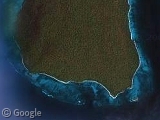
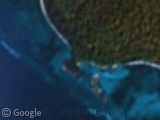
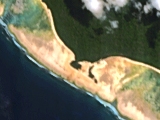
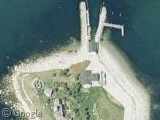
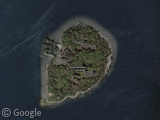
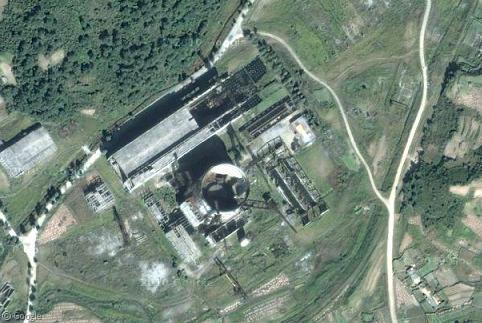
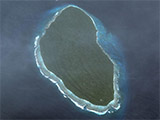
I might be mistaken, but I don’ think there’s much different between the before- and after-tsunami photos other than that the tide is out on the second one. The coastlines and tree coverage look identical.
Doug,
If you read the article associated with the second image you will see it is a lot more significant than the tide being out (permanently)
[quote] The formerly submerged coral reefs that ring North Sentinel Island are now exposed to the surface, as the entire North Andamans group has experienced tectonic uplift. Circumstances were reversed to the south in the South Andaman and Nicobar Islands, where large land areas were submerged down to between one and four metres in depth.
The international collaborative programme CORDIO (Coral Reef Degradation in the Indian Ocean) estimates that these uplifted North Sentinel Island reefs are unlikely to survive, as either they are positioned too high for high tide to reach them or submerged too shallowly to tolerate the increased intensity of sunlight. … The islanders would typically have been fishing when the tsunami struck. However post-tsunami surveys of North Sentinel Island suggest the tribe survived the disaster intact, perhaps retreating from the shore well before the waves hit.
It is possible that the Sentinelese are now suffering from the loss of their shallow water fishing grounds, with lagoons now vanished on all but the east side of North Sentinel Island: the shallow bluish water can be clearly seen. [/quote]
The second Sherlock Holmes novel, ‘The Sign Of Four’, features a “little Andaman Islander” named Tonga who was “as venomous as a young snake”.
Doug – it’s not just a case of the tide being out. In the “after” image, the reefs are actually exposed above the water line, which was not the case before the tsunami.
See this page at the NASA JPL site: http://photojournal.jpl.nasa.gov/catalog/PIA02435
which compares before and after images:
The tide was 30 plus or minus 14 centimeters lower in the pre-earthquake image (acquired November 21, 2000) than in the post-earthquake image (acquired February 20, 2005), requiring a minimum of 30 centimeters of uplift at this locality. Observations from an Indian Coast Guard helicopter on the northwest coast of the island suggest that the actual uplift is on the order of 1 to 2 meters at this site.
(emphasis added)
And keep it that way. They’re probably better off without us. It’ll be interesting if they eventually send out an explorer but until then leave them be.
As a member of Survival International, I’m obliged to point out that while the Sentinelese are probably the most remote and insular uncontacted tribe, they are not the only one. There remain uncontacted tribes for example in the Amazon rainforest and Andes mountains as well as other islands in Oceania.
http://www.survival-international.org/
Reef dried up into a nice Beach… time to give up the life of a fisherman and open a Beach front Casino Resort… but seriously has no one gone in to see if these people are ok? fly-bys can only tell you so much
http://www.andaman.org/mapstsunami/tsunami.htm
Check out this site. It has a good ‘before’ and ‘after’ photograph.
Hopefully missionaries don’t decide that these people are savages who need to be saved. Too many indiginious cultures have been perminantly altered already.
I’m probably the last to know, but there’s a ship wrecked on the north-west of the island.
Indeed there is. For those interested, here is a link:
https://www.googlesightseeing.com/maps?p=&c=&t=k&hl=en&ll=11.593355,92.212624&z=18
i was gonna say there was a ship wreaked but looks like ppl did lol